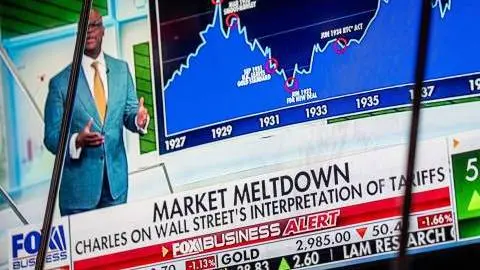How the CEE’s central banks might respond to Trump’s tariffs
The inflation rebound in Central and Eastern Europe has been more pronounced than in other areas, making it more challenging for central banks to respond to US tariffs. While early estimates suggest a negative growth impact, CEE central banks would mostly need to see a bigger shock for their current mindsets to change
Estimating the impact of US tariffs on the global economy or the largest blocs like the US, EU or China is the big question these days. Another important issue is how central banks will respond. In the CEE region, this issue is even more complicated and finding a solution will take time. Not only do we have to have a global view, but we have to add a local picture. On the one hand, GDP growth was rather disappointing last year, and this year was supposed to be a recovery. However, 2025 is also falling short, particularly in Hungary and Romania, where sub-2% growth was expected even before the US tariffs. On the other hand, Poland and the Czech Republic are performing well, with continued economic recovery observed in the first quarter.
Inflation in the CEE region continues to be a problem, and although we have seen a rebound everywhere globally, the CEE has been the most pronounced. Paradoxically, in the first quarter, the lower GDP growth countries – Hungary and Romania – had a bigger inflation problem than those with higher growth – Poland and the Czech Republic. This will complicate the room for manoeuvre for central banks if global growth momentum collapses further.
So far, we haven't heard much from central banks in the CEE region, and understandably, it will take them longer than global central banks to adapt to the new environment. However, the first central bank meetings since the US tariffs are scheduled for the end of the month in Hungary and early May in Poland and the Czech Republic. During these meetings, central bankers will need to present their views and outline the next steps.
Inflation rebound higher in the CEE than elsewhere

Given higher inflation and the fragility of markets, we can say that the global shock is not strong enough to change the minds of the National Bank of Hungary (NBH) and the National Bank of Romania (NBR) right now. That's why we continue to see no cuts in Hungary this year and 50bp in Romania in the second half of the year. In Hungary, March inflation fell after two months of unexpected rises, presenting a slightly improved outlook, while the NBH calculates a negative impact of US tariffs on GDP in the range of 0.5-0.6 percentage points this year. So, we can't rule out seeing some cuts, but they won't be on the table at the moment. And we would need more escalation to push the NBH to some cuts while the forint acts as a natural block in case of a further sell-off.
The second part of the CEE region is more interesting. In Poland, we saw a complete dovish turn in communication at the March meeting, ironically at the same time as the US tariffs announcement. We now expect a 50bp rate cut as early as the next meeting in May and 100bp in total this year, with the possibility of another 50bp if the zloty allows. Poland's Ministry of Finance expects a 0.4pp cut to GDP growth because of the tariffs, which, together with lower-than-expected inflation, would allow the central bank to resume the cutting cycle and help the economy in the new environment.
The Czech National Bank's (CNB's) meeting in early May will likely be the most interesting. The central bank was at the end of the cutting cycle before the US tariff announcement and has been the only central bank actively cutting rates in the CEE region in recent months. Before the US tariffs, it appeared that May may be the last rate cut given the economic recovery, the German fiscal story and higher-than-expected inflation.
However, the Czech Ministry of Finance sees a 0.6-0.7pp cut in GDP growth this year due to the US tariffs. So the question will be whether this is enough reason for the CNB to cut rates further below 3.25-3.50%, which the current board sees as the new neutral rate. For now, we would say no, but the openness to cut rates will be higher even if the trade war story does not escalate further from the current point. But there will still be a local hawkish bias looking at headline inflation above target and strong local fundamentals.
This publication has been prepared by ING solely for information purposes irrespective of a particular user's means, financial situation or investment objectives. The information does not constitute investment recommendation, and nor is it investment, legal or tax advice or an offer or solicitation to purchase or sell any financial instrument. Read more
Download
Download article
15 April 2025
ING Monthly: The tariff sledgehammer smashing the global world order This bundle contains 15 Articles